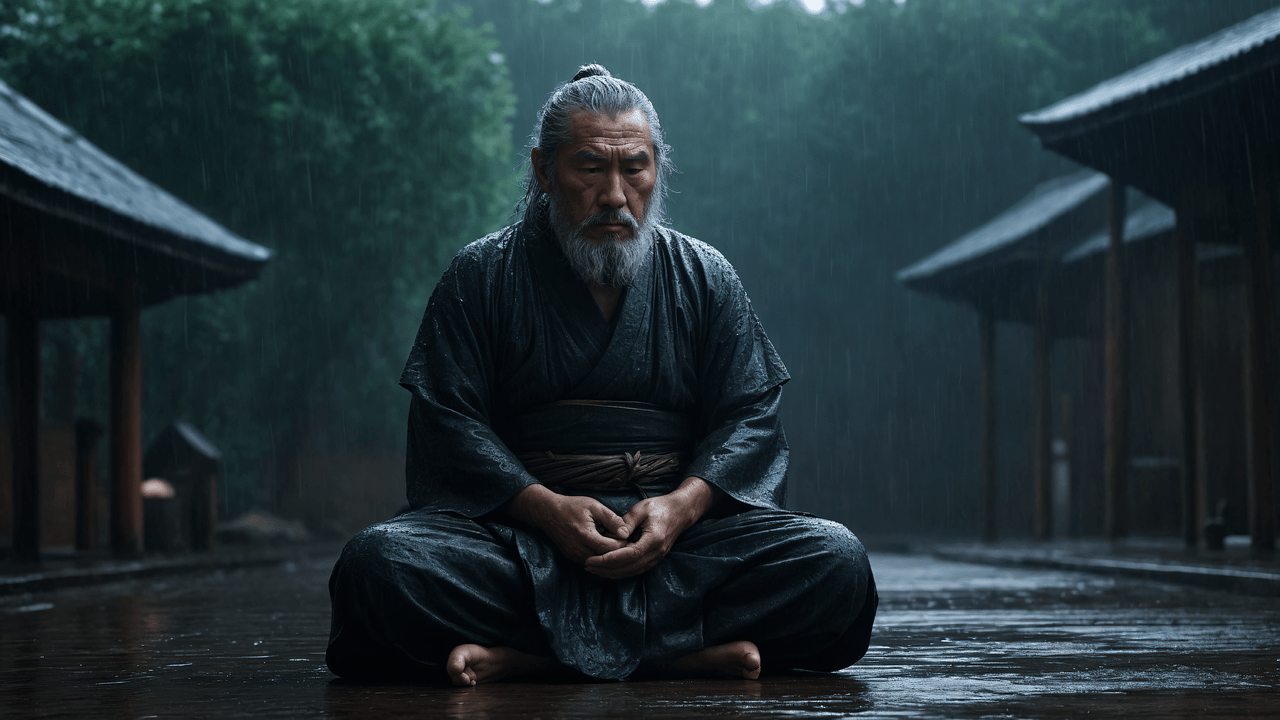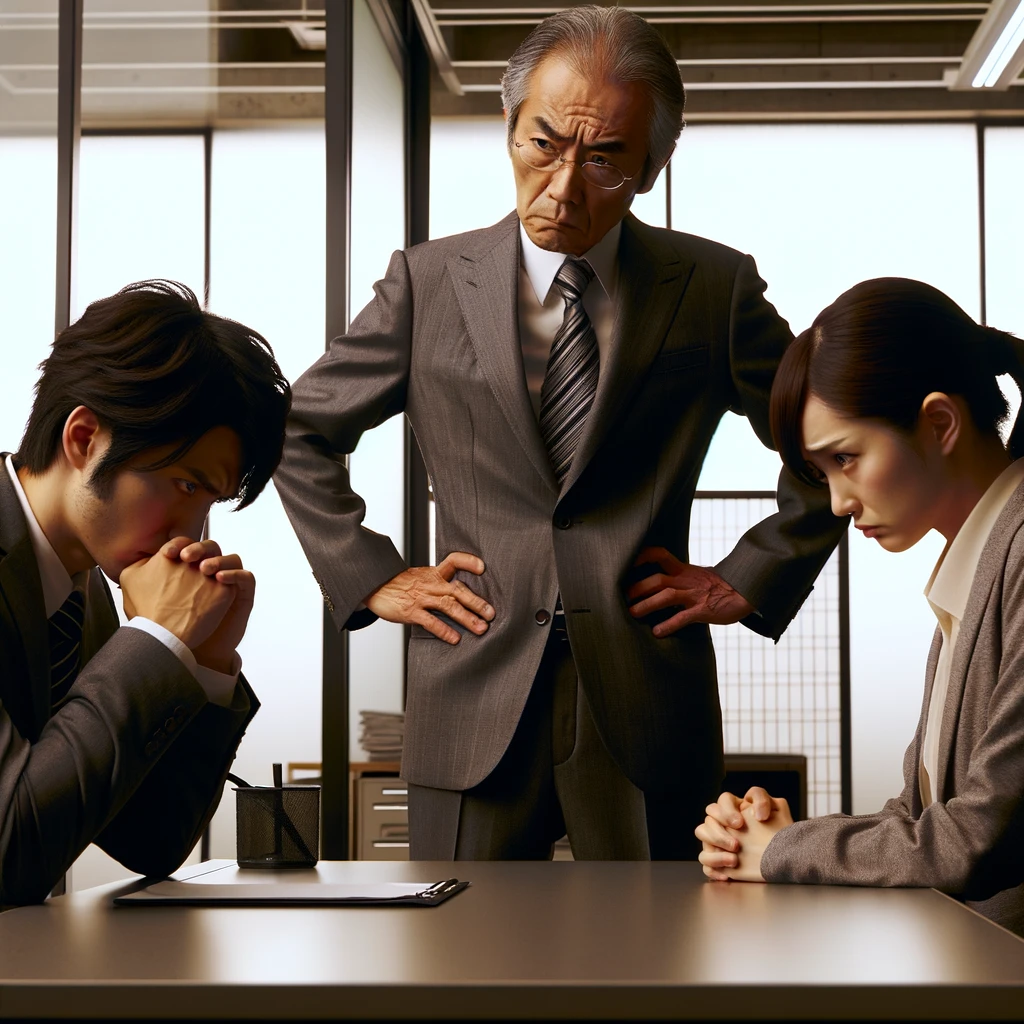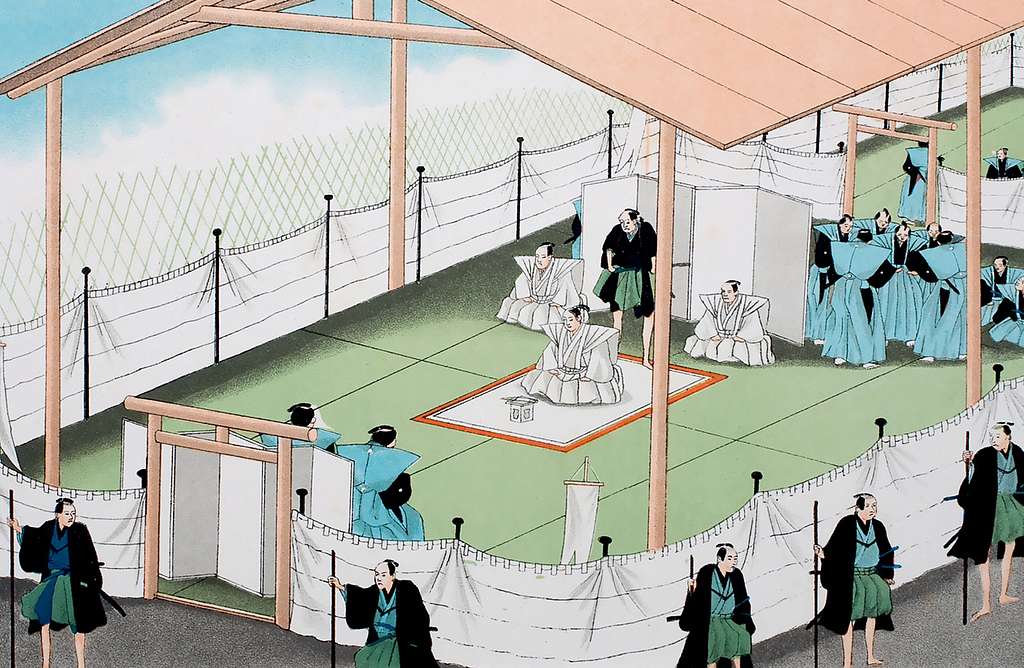Introduction
The Bushido Code, often romanticized as the noble code of the samurai, has captivated the imagination of both historians and popular culture. Originating in feudal Japan, Bushido, which translates to “the way of the warrior,” embodies a complex set of ideals including loyalty, honor, and courage. These principles guided the samurai, the elite warrior class, in their conduct, decision-making, and lifestyle, shaping much of Japanese social structure during the medieval era.
While the virtues of Bushido are celebrated for their depth and moral rigor, there are facets of this revered code that cast a shadow over its historical legacy. In this blog post, we will delve into the less discussed aspects of the Bushido Code—its rigidity, demands for absolute obedience, militaristic inclinations, and the strict roles it imposed on society. These elements, often overlooked, had profound implications that influenced not only the samurai and their contemporaries but also continue to echo in modern Japanese culture.
Our exploration aims to shed light on these downsides, providing a nuanced perspective on what is typically seen as an unblemished record of honor and valor. By examining these negative aspects, we can gain a fuller understanding of Bushido’s impact on feudal Japan and its lasting influence in the world today.
Historical Context of Bushido
The Bushido Code did not emerge as a formal, written set of rules but rather evolved organically over centuries, deeply influenced by a mix of Shinto, Zen Buddhism, and Confucianism. The origins of Bushido can be traced back to the Kamakura Period (1185-1333), when the samurai class began to gain prominence. During this time, the samurai were not only warriors but also stewards of the land, tasked with maintaining order and administering justice on behalf of the nobility.
Influence of Shinto and Zen Buddhism
Shinto, the indigenous spirituality of Japan, contributed to Bushido with its emphasis on purity, honesty, and a deep reverence for nature and the ancestors. Zen Buddhism, which gained prominence in Japan during the Kamakura Period, introduced the samurai to meditation practices and the importance of mindfulness and discipline. These religious influences helped shape the philosophical backbone of Bushido, emphasizing virtues such as sincerity, frugality, and loyalty.
Integration of Confucian Values
Confucianism, imported from China, became a significant influence on Bushido during the Edo Period (1603-1868). It emphasized hierarchical relationships and filial piety, which reinforced the samurai’s loyalty to their lords and the importance of hierarchical order within society. Confucian ideals also introduced a greater focus on scholarship and administration, expanding the role of the samurai beyond mere warriors to that of bureaucrats and educated governors.
Role in Feudal Society
In feudal Japan, the samurai were the ruling military class, which meant that Bushido was not just a personal code of ethics but a public code that governed political, social, and military life. The adherence to Bushido ensured a stable and ordered society where each class knew its role and responsibilities. However, this rigidity often led to a lack of social mobility and a suppression of personal freedoms. The samurai were expected to embody the virtues of Bushido at all times, which placed immense pressure on individuals to meet these ideals, often at great personal and ethical cost.
The Bushido Code thus served as both a moral guide and a tool for social control, shaping the governance, culture, and interpersonal relations of feudal Japan. Its legacy is complex, marked by tales of great heroism and tragic downfall, influencing the formation of modern Japanese identity and cultural norms. By understanding the historical roots and societal implications of Bushido, we can appreciate both its contributions to Japanese culture and its more problematic aspects.
Core Downsides of the Bushido Code
While the Bushido Code has been celebrated for its emphasis on honor and ethical behavior, it also has several aspects that have had negative repercussions. These downsides highlight the complexities and challenges of living under such a stringent moral framework.

1. Rigidity and Lack of Flexibility
The Bushido Code demanded strict adherence to its principles, leaving little room for personal discretion or moral flexibility. This rigidity often resulted in an inability to adapt to changing circumstances or to respond in ways that might have been more humane or pragmatic. For samurai, deviating from the code could result in dishonor or even death, stifling personal expression and sometimes forcing them into unnecessary conflict.
2. Extreme Loyalty and Obedience
One of the most revered aspects of Bushido was the requirement for absolute loyalty to one’s lord or master. This extreme loyalty could lead to detrimental outcomes, as samurai were often required to carry out orders without question, even if those orders were unethical or unjust. The practice of seppuku (ritual suicide) as a means of preserving honor underlines the fatal extent of this obedience, where failure or disgrace often had only one acceptable response.
3. Militaristic and Violent Undertones
Bushido inherently glorified martial prowess and the readiness to engage in combat, which perpetuated a cycle of violence and warfare in feudal Japan. The emphasis on bravery and the acceptance of death as an honorable end encouraged a continuous state of military preparedness and conflict. This aspect of Bushido could detract from the development of peaceful diplomatic strategies and often valorized war over more peaceful resolutions.
4. Gender Roles and Exclusion
Bushido primarily applied to men in the samurai class, reinforcing a patriarchal structure where women were largely excluded from the public sphere and decision-making roles. Women associated with the samurai class were expected to be submissive, loyal, and to manage the household, reflecting the gender biases embedded in the code. These prescribed roles limited the social and personal development of women, perpetuating a rigid gender hierarchy.
5. Impact on Modern Society
The legacy of Bushido continues to influence contemporary Japanese culture, particularly in the realms of business and social expectations. The virtues of loyalty and hard work have been translated into modern corporate environments, sometimes leading to issues like overwork and a reluctance to challenge authority. While these attributes can drive success, they also contribute to high stress levels and a lack of work-life balance.
In summary, the Bushido Code, while fostering a culture of honor and discipline, also had significant downsides that affected personal freedoms, encouraged a war-centric view of honor, and reinforced social hierarchies that were exclusionary and rigid. Understanding these complexities provides a more nuanced view of how such a historical code has shaped and sometimes constrained society.
Case Studies
To better understand the practical implications of the Bushido Code’s downsides, let’s explore specific historical and modern instances where these principles had significant consequences.
Historical Case Study: The Siege of Osaka (1614-1615)
The Siege of Osaka, a series of battles between the Tokugawa shogunate and the Toyotomi clan, vividly illustrates the extreme consequences of Bushido’s demand for loyalty and honor. After the Toyotomi clan was defeated, many samurai were forced to commit seppuku or were executed for their loyalty to the Toyotomi, despite the conflict’s inevitable outcome. This event underlines how Bushido’s values of loyalty and honor could lead to tragic and unnecessary loss of life, as surrender was often not an option due to the shame associated with defeat.
Historical Case Study: The Forty-Seven Ronin (1701-1703)
The story of the Forty-Seven Ronin is one of the most celebrated tales of Bushido in action. After their lord was forced to commit seppuku for assaulting a court official, these samurai spent over a year planning their revenge, which they achieved by killing the court official. They then committed seppuku themselves. This incident highlights the Bushido principles of loyalty and revenge, but also the rigid adherence to these principles that led to a mass loss of life for the sake of honor.
Modern Case Study: Corporate Japan and Work Ethic
In modern Japan, the spirit of Bushido can be seen in the intense loyalty and dedication expected of corporate employees. This ethos often leads to excessive overtime and extreme dedication to one’s company, sometimes at the expense of personal health and family life. The societal expectation to avoid dishonor by not failing one’s company has been linked to high stress levels and even cases of karoshi, or death from overwork. This demonstrates how the legacy of Bushido’s extreme loyalty and sacrifice can manifest in modern settings with negative consequences.

Modern Case Study: Japanese Management Practices
Japanese management practices, often inspired by Bushido principles, emphasize harmony, loyalty, and seniority. While these can create highly efficient work environments, they also suppress innovation and individuality, as challenging the status quo can be seen as dishonorable. This can lead to inefficiencies and a lack of adaptability in some Japanese businesses, showing how Bushido’s influence can be a double-edged sword in a rapidly changing global economy.
These case studies provide a lens through which to view the practical effects of Bushido on both historical and contemporary society. They illustrate the complexities of living under a code that prioritizes honor and loyalty above all else, often at great personal and societal cost.
Conclusion
The exploration of the Bushido Code’s downsides reveals a complex interplay between venerable ideals and the often harsh realities they engendered. While Bushido fostered a culture of respect, discipline, and ethical behavior, its rigid, uncompromising nature also led to outcomes that were sometimes detrimental both to individuals and to society at large. The historical case studies of the Siege of Osaka and the tale of the Forty-Seven Ronin illustrate the tragic consequences of extreme loyalty and honor—principles that led to unnecessary deaths and a perpetuation of violence. Meanwhile, modern case studies in the corporate world highlight how these age-old principles can manifest in harmful ways, such as in the extreme work ethic that leads to karoshi, or death from overwork.
These insights challenge us to reflect on the complexities of historical codes of ethics and their application in contemporary society. They encourage a critical examination of how seemingly positive values, when taken to extremes, can produce negative outcomes. As we consider the legacy of Bushido today, it is crucial to think critically about which aspects of this code can be adapted to modern life and how its less favorable dimensions can be reformed.
In recognizing both the merits and the flaws of Bushido, we can appreciate it not only as a historical artifact but also as a living influence that continues to shape behaviors and values. This nuanced understanding allows for a more balanced view of cultural legacies and their impacts, encouraging a thoughtful approach to integrating historical wisdom into modern contexts.
Further Reading and Resources
For those interested in delving deeper into the Bushido Code, its historical context, and its modern implications, the following books, articles, and documentaries provide a wealth of information and diverse perspectives:
Books
- “Bushido: The Soul of Japan” by Inazo Nitobe
This classic work, first published in 1900, offers an exploration of the Bushido Code and its roots in the philosophies and religions of Japan. Nitobe’s perspective is particularly valuable for understanding how Bushido was perceived at the turn of the 20th century and how it has influenced modern Japanese and global perceptions of Japan. - “Hagakure: The Book of the Samurai” by Yamamoto Tsunetomo
Written in the early 18th century, this book is a collection of commentaries by the samurai Yamamoto Tsunetomo. It encapsulates the views and philosophies of the Edo-period samurai and is considered one of the most insightful texts on the practical and philosophical aspects of Bushido. - “The Samurai Series: The Book of Five Rings, Hagakure, and Bushido” by Miyamoto Musashi and Others
This collection includes some of the most critical texts related to the samurai ethos, including “The Book of Five Rings” by Miyamoto Musashi, which provides strategic depth to the martial aspects of Bushido.
Articles
- “Bushido in Modern Japan: Ethics and the Corporate Warrior” by Robert Clark
This article explores the application of Bushido principles in contemporary Japanese business practices and how these ancient codes influence modern corporate culture and ethics. - “The Dark Side of Bushido” by Michael Wert
Wert’s article offers a critical look at the less glorified aspects of Bushido, discussing how its principles have sometimes led to destructive behavior and rigid societal norms.
Documentaries
- “Samurai Headhunters” (History Channel)
This documentary uncovers the dark arts of the samurai, including the influence of Bushido in their warfare tactics and personal lives. It provides a realistic view of the samurai’s role in feudal Japan. - “The Way of the Samurai” (BBC)
Focused on the historical development and cultural impact of the samurai class, this documentary provides insights into how Bushido shaped the lives of these warriors and the society around them.
These resources offer a rounded view of Bushido, from its philosophical underpinnings to its practical applications and cultural legacy. They are essential for anyone looking to understand the full scope of this influential code beyond its idealized portrayal.

